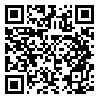BibTeX | RIS | EndNote | Medlars | ProCite | Reference Manager | RefWorks
Send citation to:
URL: http://nbr.khu.ac.ir/article-1-2606-en.html
Nowadays, the entrance of nanoparticles into high seas has led to toxic effects on aquatic organisms. Copper oxide nanoparticles is among the most widely used nanoparticles. The presence of these nanoparticles in the aquatic environments cause new environmental problems, which indicate the necessity of the examination of the effects of these nanoparticles on the aquatic organisms. The alfalfa plant has antioxidantive and regenerative effects due to its rich content of proteins, vitamin C and flavonoids. In this study, 6 (5 experimental and a control) groups were designed. Koi fish larvae were fed with biomar combined with various percentages of hay (0%, 10% and 20%) and were exposed to copper oxide nanoparticles with two concentrations (0 mg and 200 mg) for 14 days. The average initial length of larvae was 30.4 ± 0.01 mm, their average initial weight was 0.31 ± 0.05 and their age was around 20 dph. The specific growth rate, weight gain, length gain, survival rate and feed conversion ratio were calculated for each group. The results showed a significant higher growth rate in the groupstreated with 10% and 20% of alfalfa, as compared with the control group. In addition, the Cu NPs-treated group with 0% alfalfa rations showed the lowest rate of growth, as compared with the control group. Groups which were exposed to copper nanoparticles while receiving alfalfa-containing rations had growth indices better than the group exposed to copper nanoparticles and fed with 0% alfalfa ration, which indicated the antioxidant properties and growth-promoting effects of alfalfa.
Received: 2016/08/15 | Revised: 2020/07/1 | Accepted: 2018/04/24 | Published: 2018/04/24 | ePublished: 2018/04/24
| Rights and permissions | |
 |
This work is licensed under a Creative Commons Attribution-NonCommercial 4.0 International License. |







